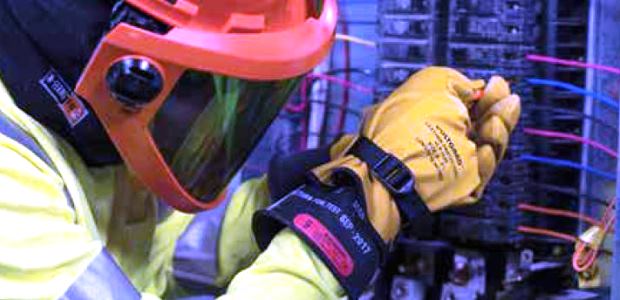
We're better equipped than ever before to provide hand protection to industrial workers. The biggest challenge is making sure regulations and standards around PPE and hand protection keep pace.

This could be the most consequential annual conference for the society in many years.
"The grants we announce today clearly demonstrate our efforts to meet the opioid crisis with every tool at our disposal," said SAMHSA Acting Deputy Assistant Secretary Kana Enomoto.

What's shocking is that many workers are not using rubber insulating equipment because they simply don't know they need it.

Safety training is the best way to ensure your procedures are understood and a great way to reinforce safe behaviors. It reinforces your safety goals and reminds participants about the impacts of not achieving those goals.

When vision is impaired, quality of life and the ability to work experience a drastic and unfortunate decline. Preventing eye injuries should be a top task on every safety professional's to-do list.

Work site safety inspections can be a vital part of your injury prevention efforts if done well.

Exelon Corporation's announcement said it is taking several "first steps" to shut down the nuclear power plant, even as the company explained what kind of relief it needs to keep the plant in operation.
The UN agency has called for the tobacco industry to compensate for its products that are harmful.
The event takes place Oct. 30-31, 2017, at the Tampa Marriott Waterside Hotel and Marina in Tampa, Fla, and features sessions in four tracks: Enterprise Risk Management and Risk Assessment, Emergency Response and Preparedness, Management and Leadership, and Emerging Issues and International.
Deputy Secretary Jeffrey Rosen will serve as the Regulatory Reform Officer and Chairman of the Regulatory Task Force.
"Drowsy driving is an overlooked and underfunded issue in highway safety," said GHSA Executive Director Jonathan Adkins, "yet our 2016 report found that tired drivers contribute to 328,000 crashes annually and cost society $109 billion a year. We appreciate The National Road Safety Foundation supporting these programs and expect that some may become models that others can replicate."

Since 1969, the death rate for COPD has doubled, and it is the fourth main cause of disability in the United States, with costs projected to increase to $49 billion by 2020. Most COPD cases are preventable because eight in 10 COPD deaths are caused by smoking.
"This is an important first for the cancer community," said Dr. Richard Pazdur, MD, acting director of the Office of Hematology and Oncology Products in FDA's Center for Drug Evaluation and Research and director of FDA's Oncology Center of Excellence. "Until now, the FDA has approved cancer treatments based on where in the body the cancer started—for example, lung or breast cancers. We have now approved a drug based on a tumor's biomarker without regard to the tumor's original location."
Health Canada also this month announced changes to the Food and Drug Regulations that will better protect Canadians against the risk of antimicrobial resistance by better controlling access to veterinary antimicrobial drugs for food-producing animals.

The workshop participants will cover five "hot-button areas": engineering/technologies, enforcement, community outreach and education, hazard management, and human factors.
The Boeing Company, PotashCorp and Deputy Chief Lou Jogmen were all recognized.